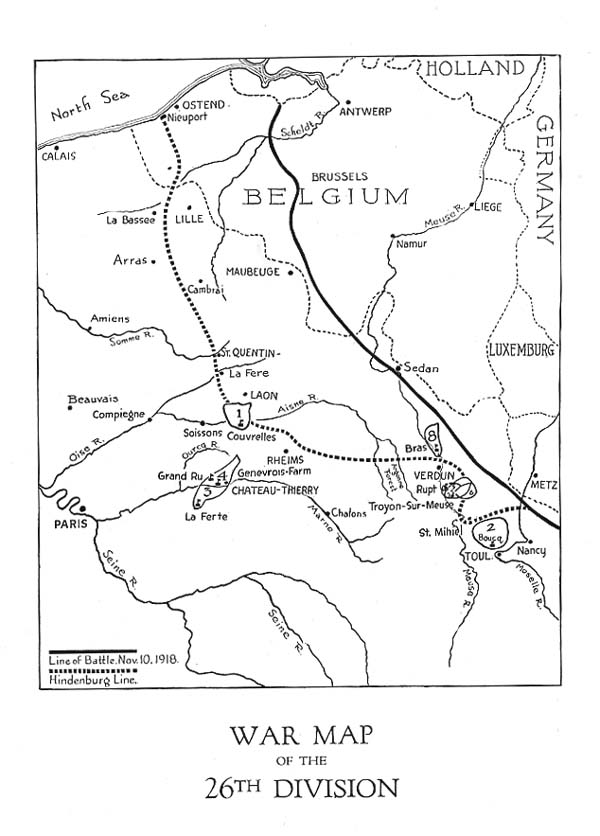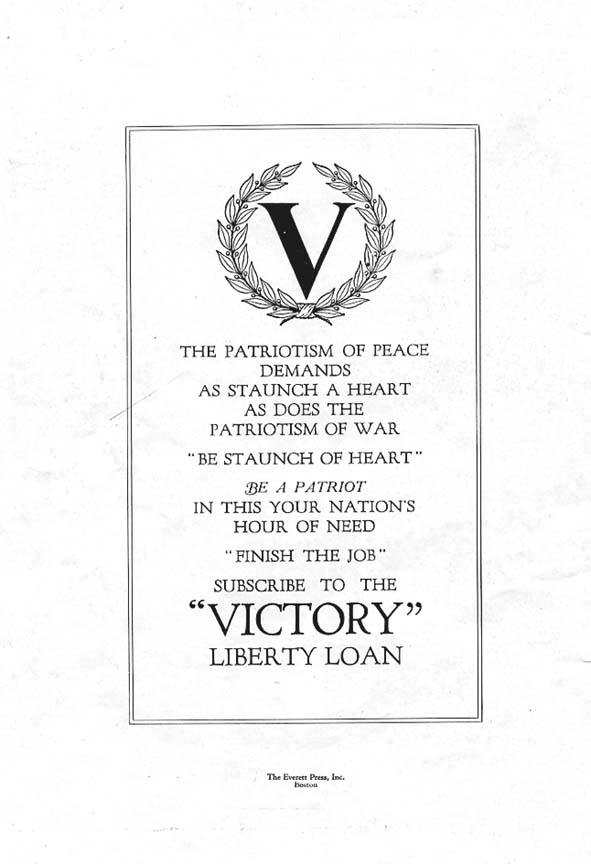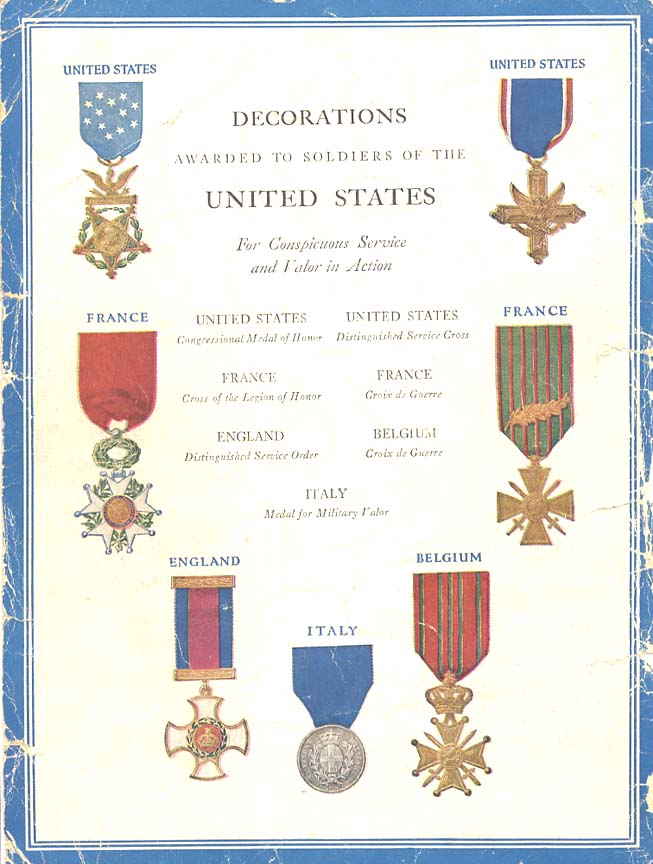Brief History of the 26th Division In Pictures
In Commemoration of the Foreign Service
and Home-Coming of the 26th Division
Published by the “Committee of Welcome”
Appointed by the Governor of Massachusetts,
Hon. Calvin Coolidge
and the Mayor of Boston,
Hon. Andrew J. Peters.
Official Programme — 25 cents — April 25, 1919
NEW ENGLAND’S OWN
There’s a sound that swells to the listening sky, and breaks, and swells again
A sound to the April breezes blown of a host of marching men;
And the people’s hearts lift up to hear, and the city’s gates swing wide
To the tramp of twenty thousand strong, the beat of a tawny tide.
They come, they come with the throbbing drum! Let the glad word be known.
Fling the flags to the four free winds, and greet New England’s Own!These were the eager-hearted ones when first the bugles blew;
The clean north winds had swept their souls before the war-flags flew.
They set their faces like the flint of the old north country hills;
They pledged their manhood without stint, and their young, intrepid wills.
They did not stay for the perilous way. Forward! their cry was thrown;
Stout hearts might well have faltered then — but not New England’s Own!They caught the spurt of the first red stars that flamed the battle sign;
They gave their bodies as iron bars to weld the battle line;
Aisne-Marne, Chavignon, St. Mihiel, Meuse-Argonne east and west
The old strange names, familiar now as heart-beats in each breast,
And keen with memories of those they left to sleep alone,
Dust to dust in an alien land, yet still New England’s Own.They dreamed the dreams of peace and youth, but when the storm was rife
They counted comfort less than truth and honor more than life.
Each with his starry flag above, his weapon in his hand,
Fought for earth’s liberty, and love, and his own dear native land;
Walked blindly in the smoking ways, that the light his eyes had known
Might never perish from the shore that sent New England’s Own.There’s a sound that swells in the April air till it shakes the market-place
The tread of a host of marching men who have looked death in the face;
Who have staggered back from the brink of hell to find the world still sweet
And the dust of God’s own country gray once more upon their feet.
They come, they come with the throbbing drum! Let the high flag be flown
The flag they shed their blood to keep, and kept — New England’s Own!—Nancy Byrd Turner.
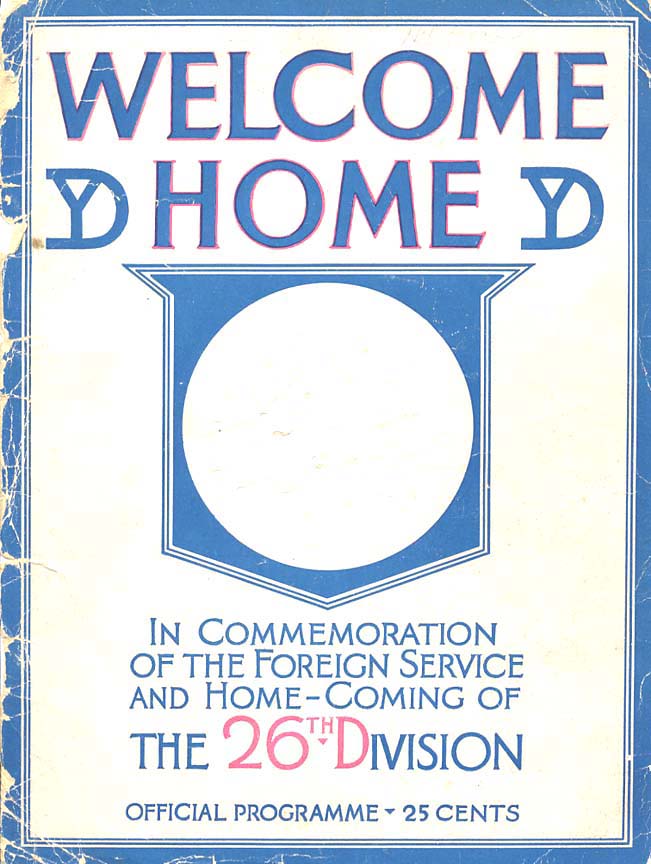
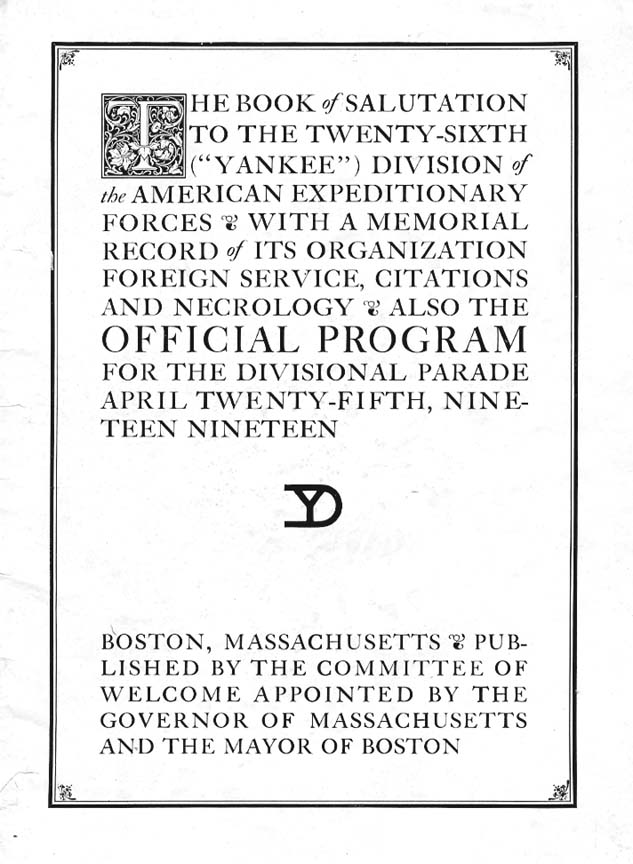
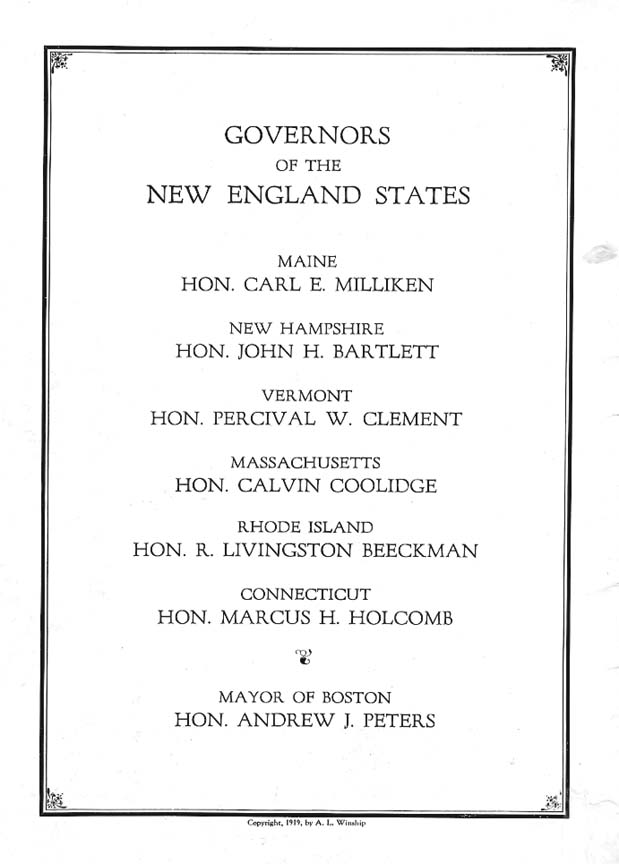
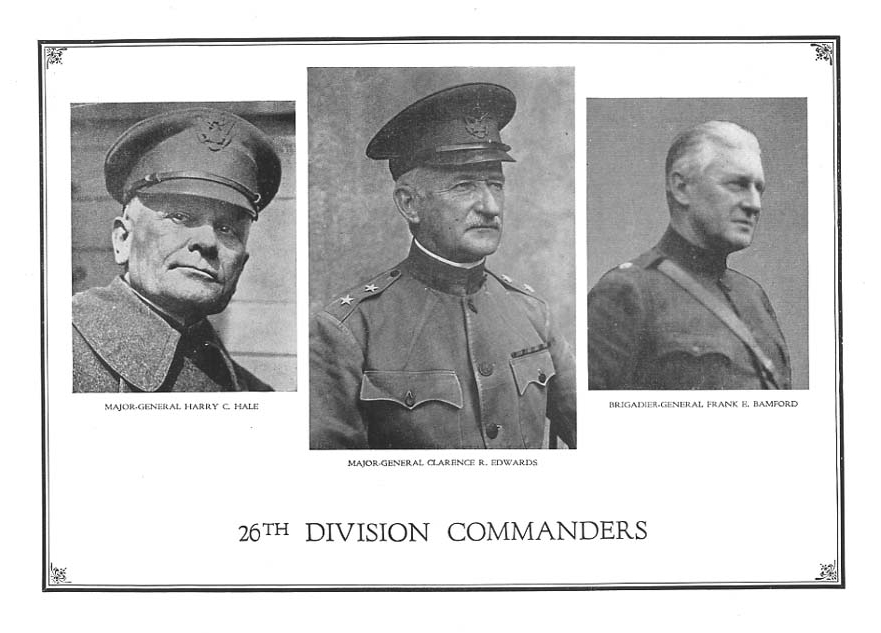
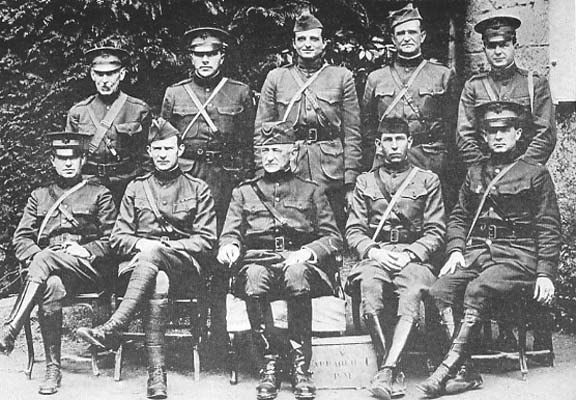
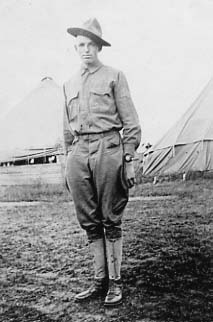
101st Ammo. Train, 26th Div.
[Photo not in original gallery]

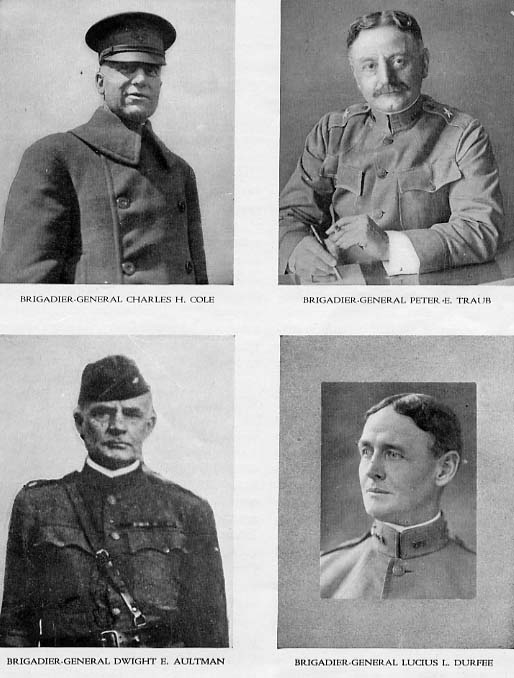

crossroads leading to “Death Valley,” which was constantly under shell fire,
at Samogneuz, France, Oct. 27, 1918
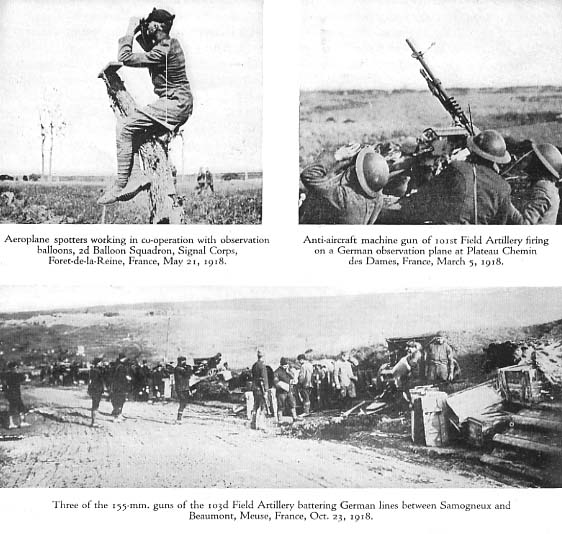
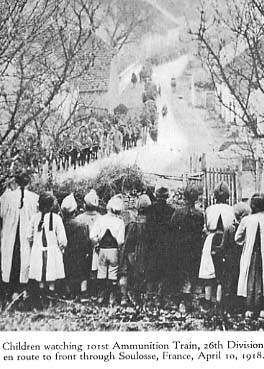
26th Division en route to front
through Soulosse, France, April 10, 1918.
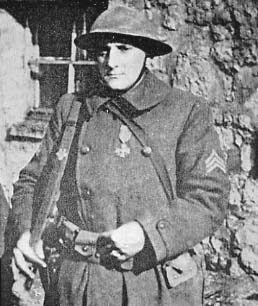
to capture a German prisoner. Decorated with war cross.
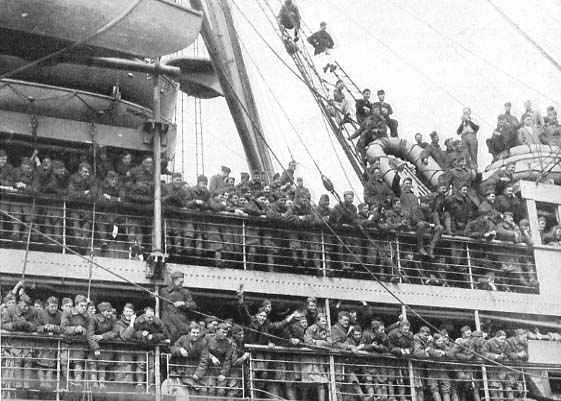
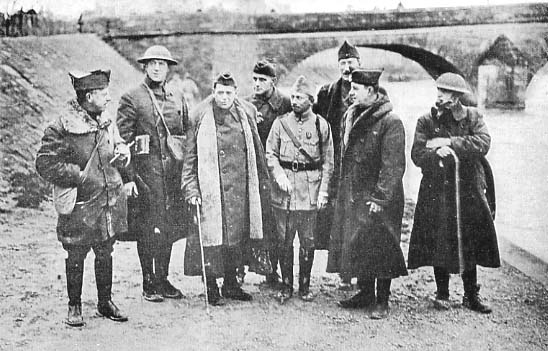
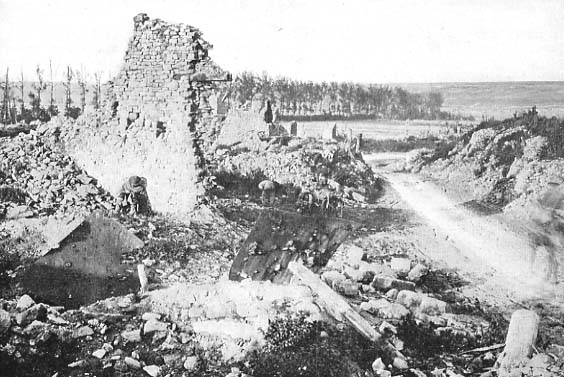
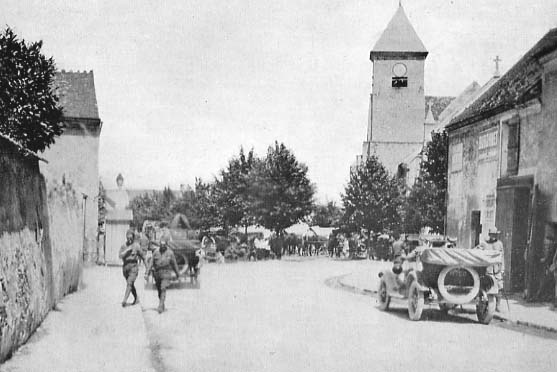
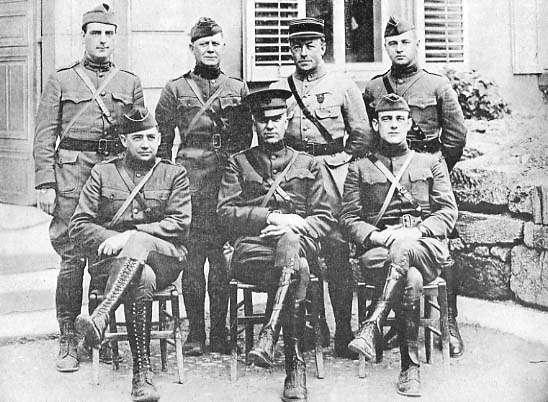
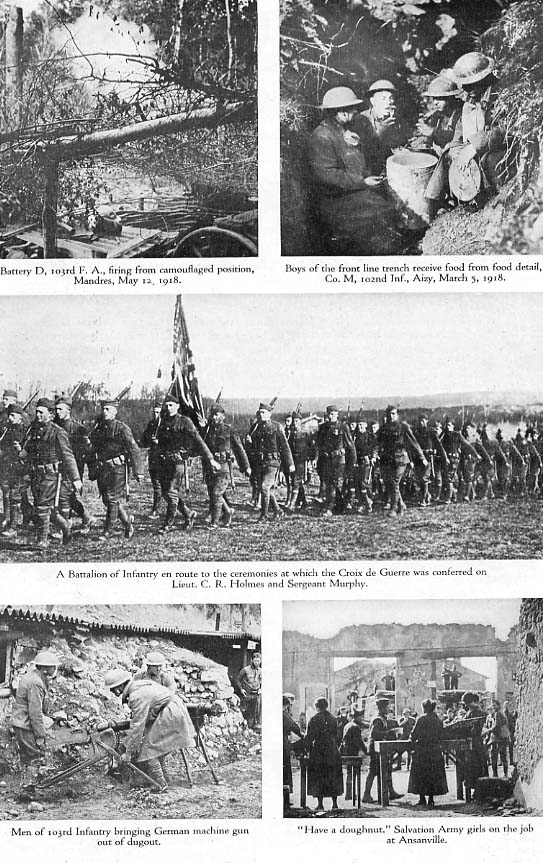
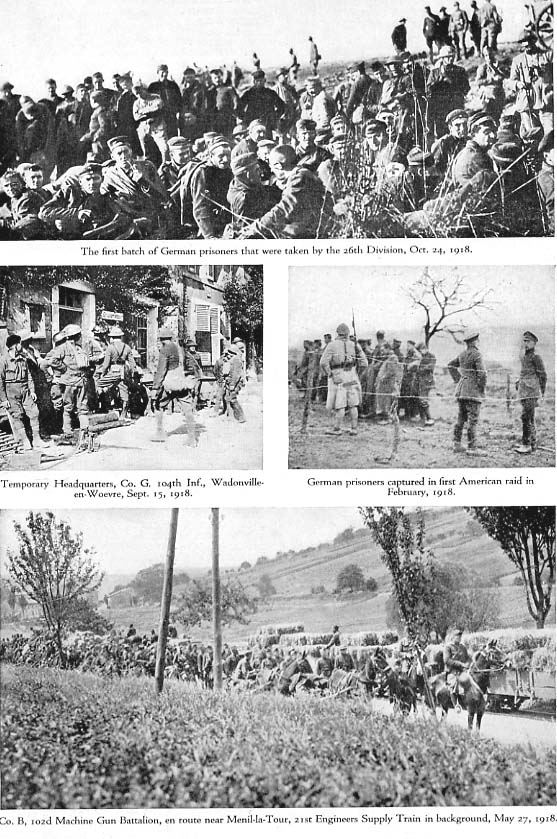
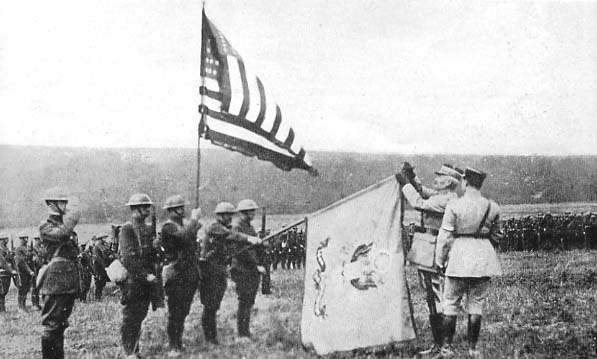
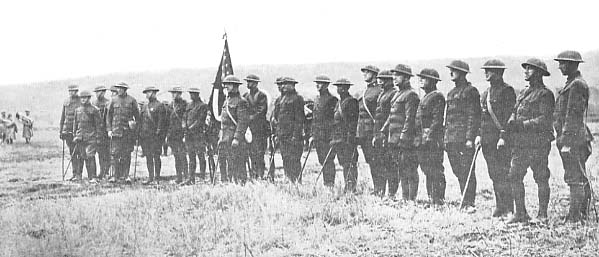
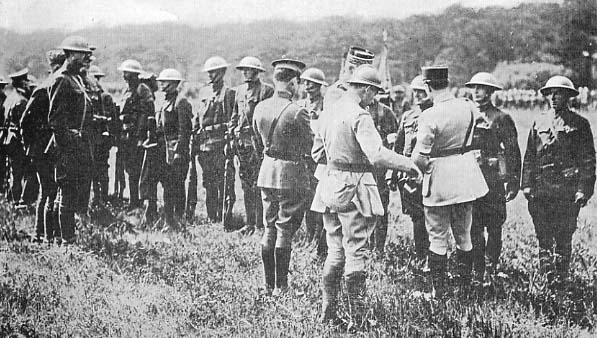
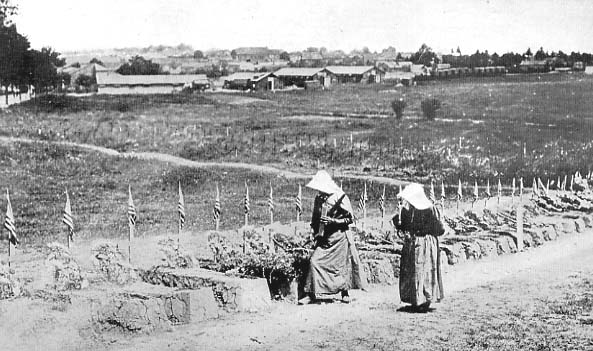
KEY TO MAP
1. Chemin des Dames Sector. Baptism of fire; pupils in the art of war under the expert teaching of our French allies; rough lessons given by the Germans in raid and gas attack; hard blows returned; the first rolling barrage ever fired by American artillery.
2. Toul Sector. While occupying this sector the Division was engaged with the enemy at BOIS BRULE (APREMONT), April 10, 12-13; SEICHEPREY, April 20-21; HUMBERT PLANTATION, May 27; RICHECOURT, May 30; XIVRAY-MARVOISIN, June 10.
3. Pas Fini Sector. The Twenty Sixth relieved the Second Division in this sector. The line ran through the famous BOIS DE BELLEAU and the villages of VAUX and BOURESCHES, with the town of CHATEAU-THIERRY a short distance to the southeast. Here it was that the Division made ready for the jump-off for the AISNE-MARNE offensive.
4. Aisne-Marne Offensive. The repeated attacks of the Division during the week of July 18-25 netted a total advance of seventeen and a half kilometers, freeing the towns of TORCY, GIVRY, BELLEAU, EPIEDS, TRUGNY, and ETREPILLY.
5. Rupt Sector. Occupied prior to St. Mihiel offensive.
6. St. Mihiel Offensive. An attack made notable by the night march to occupy VIGNEULLES, thus effecting a junction between the American attacks on the west and south of the ST. MIHIEL salient.
7. Troyon Sector. The occupation and organization of the ground captured in the ST. MIHIEL offensive. The freed villages included THILLOT, ST. MAURICE. VIGNEULLES, VIEVILLE, and HANNONVILLE, all of which held a civilian population that had suffered for four years under German occupation.
8. Meuse-Argonne Offensive. Twenty-six days of continued exposure to severe artillery and machine-gun fire; two attacks on a large scale, over a wide front, against some of the most important German positions in the whole Western battle line. A month on the famous Verdun front – a month of suffering and of glory.
